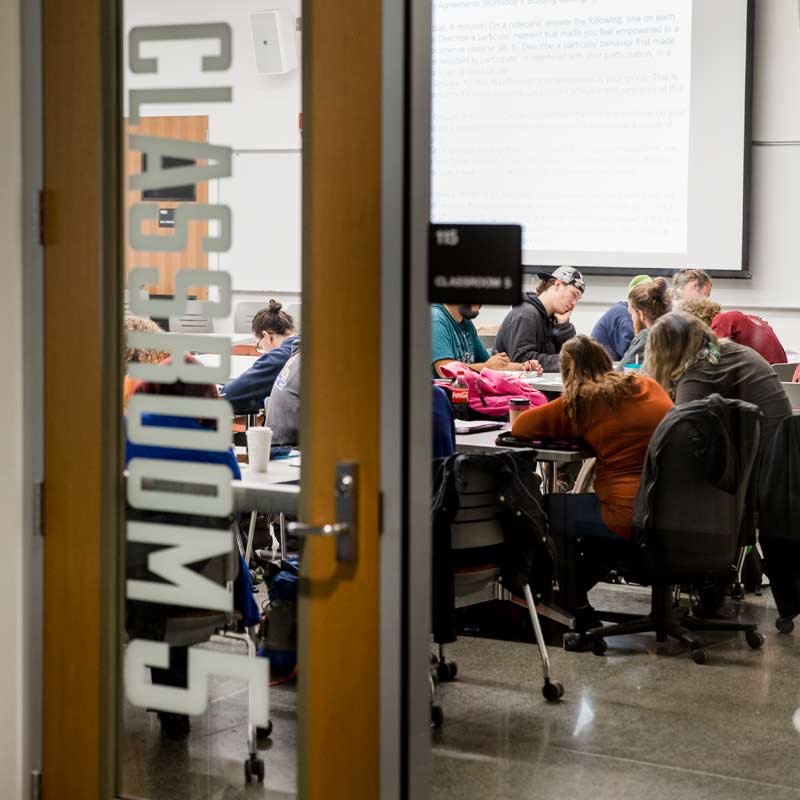Assessing Integrative Learning
Because students in learning community courses are typically enrolled in two or more courses together, learning communities are powerful sites for helping students become more effective and intentional integrative thinkers.
Integrative thinking—the ability to connect ideas and methods across contexts and apply them to new problems—is one of four essential learning outcomes identified in the American Association of Colleges and Universities (AAC&U) College Learning for the New Global Centuryreport. Learning communities, done well, provide students with regular, well-structured opportunities to develop their integrative thinking abilities.
Assessing integrative and interdisciplinary learning is a critical practice for learning community programs. Through its Valid Assessment of Learning in Undergraduate Education (VALUE), AAC&U designed a set of rubrics for assessing student work in relation to the essential learning outcomes identified in their earlier work.
Another other widely-used strategy for assessing integrative and interdisciplinary learning comes from the national project on Assessing Learning in Learning Communities, a two-year national action research project led by Washington Center in collaboration with Veronica Boix-Mansilla from the Harvard Graduate School of Education. Campus teams used a framework developed by Boix-Mansilla and her colleagues at Project Zero to assess students’ work. This Collaborative Assessment Protocol integrates an empirical definition of interdisciplinarity with a protocol for a structured conversation. Results of this national project are reported in a special issue of the Journal of Learning Community Research.
Many teams participating in Assessing Learning in Learning Communities realized that they lacked a common understanding of what integrative or interdisciplinary student work looked like in practice. They discovered that too few assignments explicitly asked students to make integrative moves. Along with other campus teams, Skagit Valley College (SVC) articulated a definition of their “integration” learning outcome for all their learning communities:
Students will be able to...
- Identify the strengths and limitations of different fields of study.
- Identify and evaluate the relationships among different fields of study.
- Integrate concepts and analytical frameworks from multiple perspectives to develop one or more of the following: more comprehensive descriptions, multi-causal explanations, new interpretations, or deeper explorations of issues.
- Analyze and reflect upon insights gained from integrating multiple perspectives in a purposeful project or experience.
Based on that shared definition, faculty in Skagit’s learning communities now design assignments that help students practice those skills in explicit ways. SVC is not alone; designing integrative assignments has become an explicit focus in most professional development programs supporting learning community faculty.
Resources
When Faculty Assess Integrative Learning: Faculty Inquiry to Improve Learning Community Practice
Emily Lardner and Gillies Malnarich. Change: The Magazine of Higher Learning. September/October 2009.
Special Issue: National Project on Assessing Learning in Learning Communities
Emily Lardner and Gillies Malnarich, editors. Journal of Learning Communities Research 3:30. December 2008/January 2009.
Interdisciplinary Understanding: What Counts as Quality Work?
Veronica Boix-Mansilla. Harvard University: Interdisciplinary Studies Project. 2007.
Assessing Student Work at Disciplinary Crossroads
Veronica Boix-Mansilla. Change: The Magazine of Higher Learning. January/February 2005.
Integrative Learning VALUE Rubric
AAC&U website.
National Project for Assessing Learning in Learning Communities
Washington Center website.
Assessment and Learning Communities: Taking Stock after Six Years (1991)

